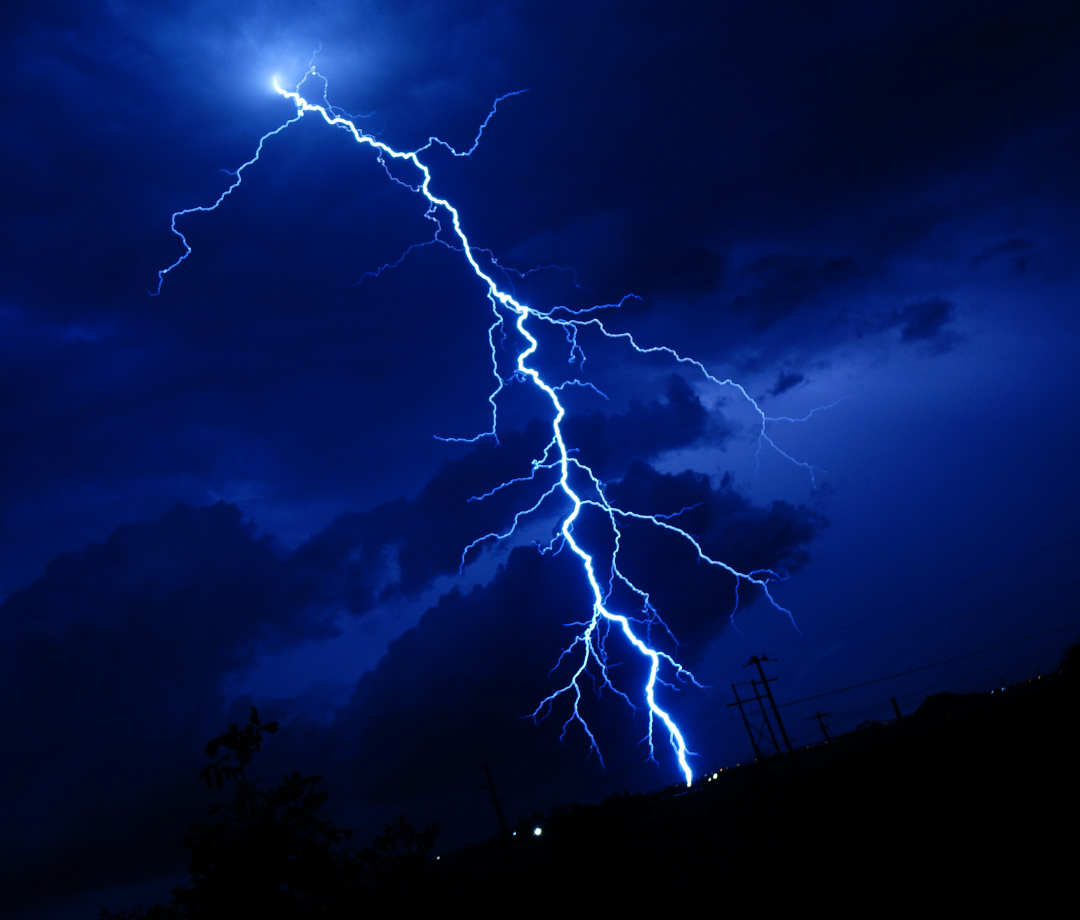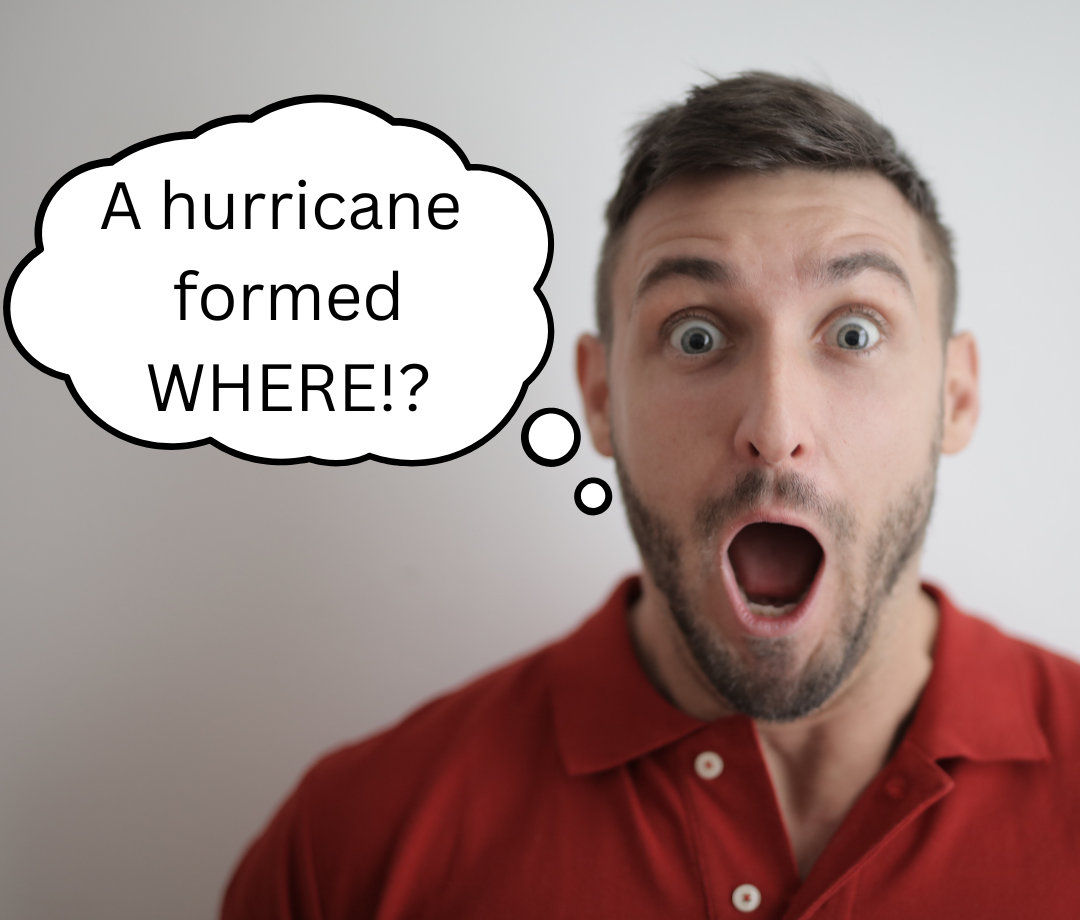What Are Thunderstorms?
Thunderstorms, also known as lightning storms, are storms that often contain thunder and lightning. Rain, hail, and heavy winds are also very common occurrences within thunderstorms. Although they are found with many types of clouds present, cumulonimbus clouds are the ones most commonly found when thunderstorms are present. It is even possible that something such as a tornado can spawn from thunderstorms, especially when supercell clouds are present. It would be somewhat accurate, although a massive oversimplification, to say that a thunderstorm is a small, very mild hurricanes with much weaker winds.
How Do Thunderstorms Form?
Thunderstorms begin to form when moist air rises from the ground up to the clouds. When the water vapour cools off, it forms a cloud, which gets larger, with the top eventually getting high enough that it reaches an elevation below freezing, which means that small ice crystals are also formed. When these ice particles collide with each other, and with water particles, they become charged, some becoming positive, but most becoming negative. The negative ones tend to gather near the bottom of the cloud, creating positive charges on the ground. A positive and negative charge will try to ‘connect’ with each other. When positive charges on the ground connect with negative charges in the cloud, it forms cloud-to-ground lightning. When positive charges in one cloud connect with negative charges in another cloud, it creates intra-cloud lightning, which is also called sheet lightning. Both forms of lightning also create a loud, booming sound, called thunder.
When there is enough lightning, there is a thunderstorm.
How Common Are Thunderstorms?
Thunderstorms are extremely common, with an estimated 16 million occurring in the world in a year, and 2,000 happening on Earth at any time.
It should be noted that spacecraft such as the Voyager craft have detected lightning on Jupiter, Saturn and Uranus. Venus, Mars and Neptune are all speculated to have lightning occur, but it has never been officially confirmed. Mercury is not thought to have lightning.
When Do Most Thunderstorms Happen?
Although thunderstorms can occur at any time of the day, most of them happen in the late afternoon, evening or night. They can occur at any time of year, but late spring and most of summer are when most thunderstorms happen. They rarely occur in the winter, although snow-based thunderstorms are a possibility.
What Areas Have The Most Thunderstorms?
Thunderstorms are most common in places that have temperate climates and continental climates according to the Koppen Climate Classification. Most places in Canada have one of these types of climates, with continental climates being the type that most Canadians live in. Even places within the territories, such as Yellowknife, have continental climates and not polar climates.
What Is A Severe Thunderstorm?
Sometimes a thunderstorm can be referred to as a severe thunderstorm. This is not a subjective term. For a thunderstorm to be graded as severe, it needs to have one of the following three things:
Hail of 2.5 cm (1 inch) or more.
Winds of 93 km/h (58 mph)
A tornado of F0 or higher on the Fujita Scale.
What Is A Thunderstorm Watch?
A thunderstorm watch is declared for an area when there is a reasonable chance that a thunderstorm or severe thunderstorm will appear in the area, or around it. For example, if you are in a small city, and a thunderstorm warning is declared for your neighbouring large city, there is also a chance that your city will soon experience a thunderstorm or severe thunderstorm. Thunderstorm watches often come a few hours before thunderstorm warnings.
What Is A Thunderstorm Warning?
A thunderstorm warning is declared when a thunderstorm or severe thunderstorm is almost certain, or even currently occurring within a certain city or neighbouring city. Thunderstorm warnings are usually preceded by thunderstorm watches.
How Much Damage Can Thunderstorms Do?
Although excessive amounts of damage during thunderstorms are relatively rare, there are several ways that mild to moderate damage can be done, with serious damage still being possible. The most obvious damage is done by lightning itself. It can cause power outages, cause fires when it hits a building or tree, and can seriously injure or even kill someone if it strikes. Park ranger Roy Sullivan is known for being struck by lightning more than anyone else, being struck seven times in his life, and surviving each one, which is not as far-fetched as it seems, lightning has only a 10% fatality rate.
In addition to the lightning itself, there are several other threats to the safety of you and your property. Some of the most prominent are as follows:
- High winds. Winds can damage roofs and windows while doing significant damage to mobile homes. They can also knock down items such as trees and power lines, which can cause some similar damage as actual lightning.
- Hail. Hail can do damage to homes, especially mobile homes, crops, and signs, and similarly light objects. It can also injure people and pets who are unfortunate enough to get caught outside.
- Rain and flooding. In most scenarios, rain isn’t a danger, although it can be annoying. However, very large amounts of rain, especially in areas with poor sewer systems or that are low lying, floods are a stronger possibility.
- Tornadoes are possibly the most devastating scenario that could spawn from a thunderstorm. They can cause untold destruction, even levelling houses completely.
Note that these are not the only possible dangers. There are others not mentioned here.
How Can I Prepare For A Thunderstorm?
Despite the dangers mentioned above, there are plenty of things that you can do to prepare yourself for a thunderstorm. Some of the best things you can do to protect yourself are as follows:
Learn about your local municipalities. Knowing that places near you are under a thunderstorm watch or warning can hint that your municipality also might be impacted.
Watch weather reports. You are more likely to hear about thunderstorm watches and warnings earlier.
Cancel outdoor plans. Cancelling your fireworks display or basketball game is the safe thing to do if your area is under a thunderstorm watch or warning.
Have a safe location in mind. If you do venture out, stay close to home, or at least have a safe location you can head to.
Watch the skies. Be prepared to get inside if you see dark clouds and get to a safe location.
Get inside. Being inside protects you from most of the most dangerous scenarios, except severe floods and the most powerful tornadoes.
Stay away from open windows. Or better yet, close windows entirely beforehand.
Avoid using electrical devices and bathing. Electrical devices can be seriously damaged if the electrical system is struck. Water is also a conductor of electricity, making baths and showers dangerous.



